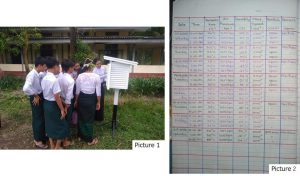The Collective Memories of Disasters in Asia: The Cyclone Nargis
“Right Information at the right time to the right target could save thousands of lives”
12 years have passed since the Cyclone Nargis hit parts of Myanmar. The water level at that time rose three meters as the severe wind blew up the ocean’s surface, swallowing people in the low-lying areas. This caused 84,537 deaths and 53,836 missing persons (source: Hazard profile of Myanmar, 2008). Survivors of this disaster gave testimonies such as “I did not know what a cyclone was like until now,” and “I was not able to evacuate timely as I did not know what to do,” which proves that lives could have been saved with the right knowledge distributed at the right time to the right audience.
Information was indeed being broadcast by Department of Meteorology and Hydrology on the radio during the landfall of Nargis, but without accompanying visual information, it was not possible to ensure dissemination of the forecasted direction and the size of the cyclone. Therefore, it was not easy for the residents, who had never experienced a cyclone, to imagine the impact of the disaster by merely being informed of how low/high the air pressure, small/large the rainfall, the speed of the wind, or low/high the storm surge would be.
As a response to the cyclone, SEEDS Asia and Fed.MES implemented a number of disaster education projects in different ways, with the help of many of its supporters. Since 2017, it started a project to install weather observation devices in schools, and there had never been such initiatives previously in Myanmar. Among the six sets of such devices SEEDS Asia brought to Myanmar, one was installed at Basic Education High School No.2, Labutta, where its teachers check the data acquired through those devices and shares it with other members of the school and the local community. A teacher, U Min Thein once said: “The Cyclone Nargis deprived the lives of 80,000 people in Labutta. What I can do in order not to repeat the same tragedy when another cyclone comes, is to disseminate daily updates as well as lessons learnt from past disasters, so that my students and the community will be able to understand what the weather information is telling us.”
This year, annual commemoration events for the cyclone are being cancelled due to the COVID-19 crisis. However, the current crisis reminds us all of the importance of information and knowledge. SEEDS Asia believes that, in order to practice protection of lives from calamities, it is imperative to promote literacy to understand reliable sources of information, and continuous efforts towards accurately interpreting it.
The experience has inspired SEEDS Asia to continue to build resilient communities in Asia for the realization of a society where lives, communities and hope for the future will be protected, particularly as in the case of Cyclone, installing systems that provide timely information to vulnerable local communities in a format that can be easily understood and acted upon.
We hope that the souls of the victims of the Cyclone Nargis rest in peace, and wish for a peaceful day for everyone who was affected by this disaster.

Photo 1: A teacher and students checking the weather data, and the teacher teaching the meaning of the acquired information (taken in November, 2019)
Photo 2: Recording of regular weather observation at Basic Education High School No.2, Labutta is practiced even on a rest day (taken on 2nd May, 2020)